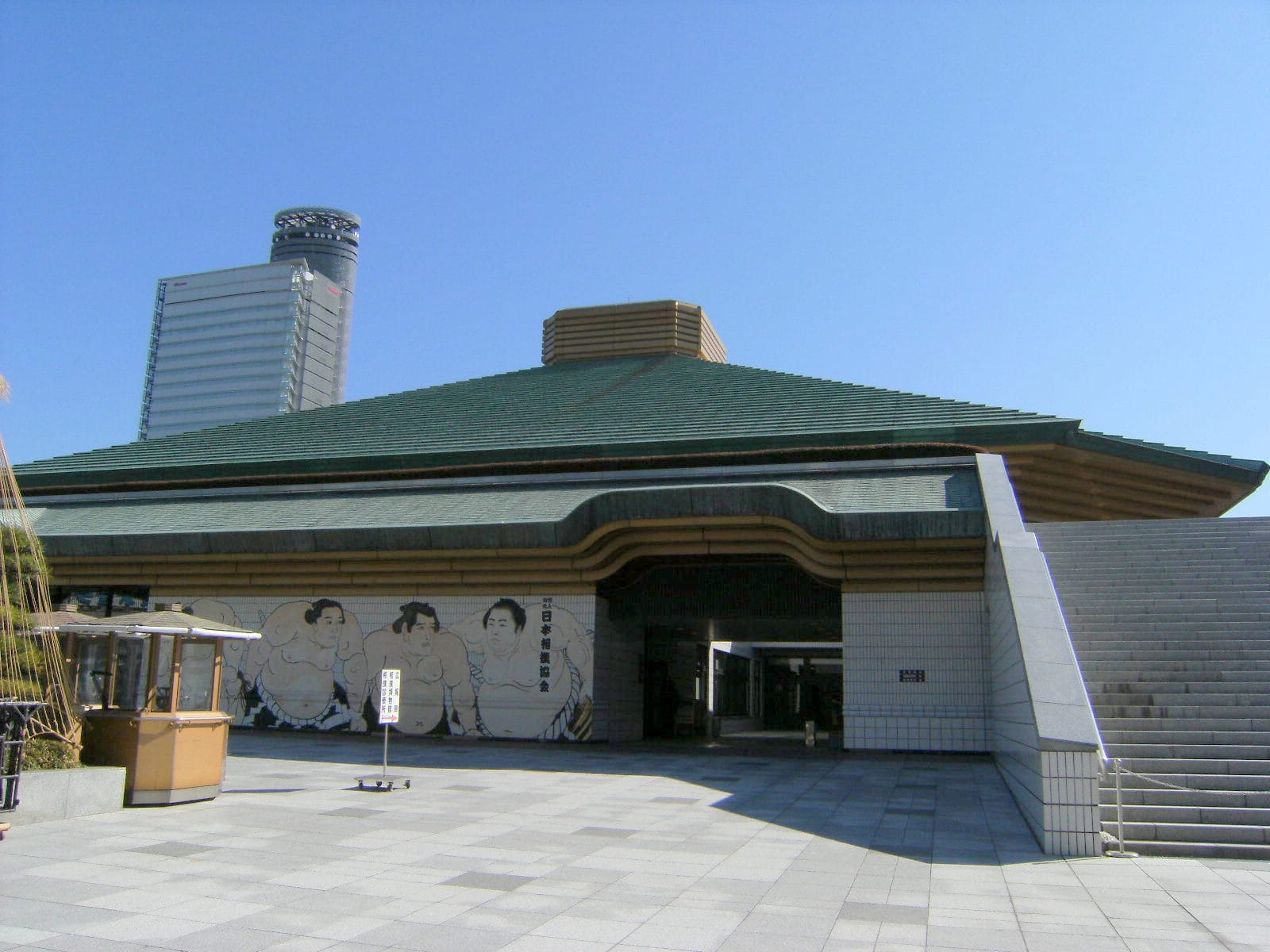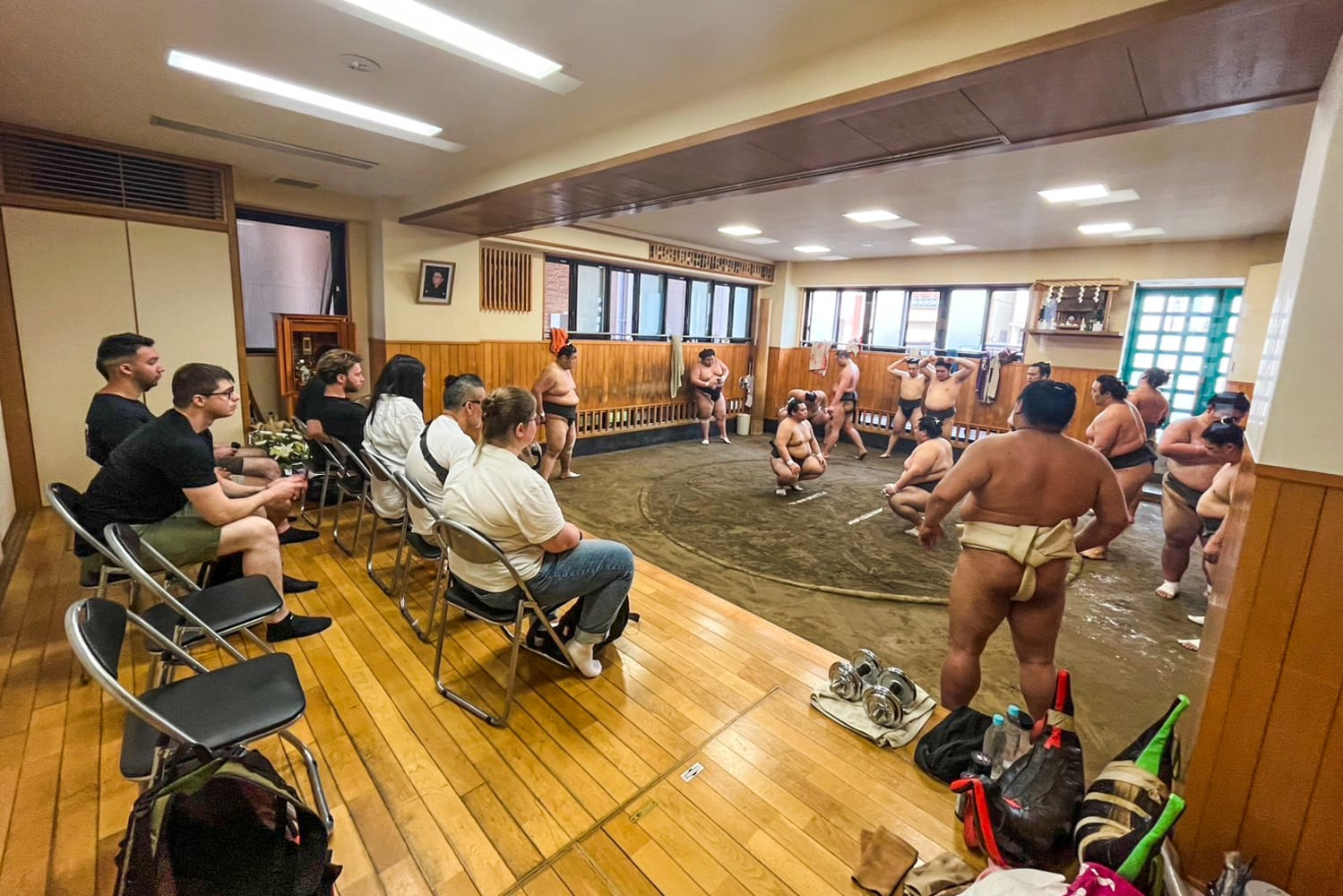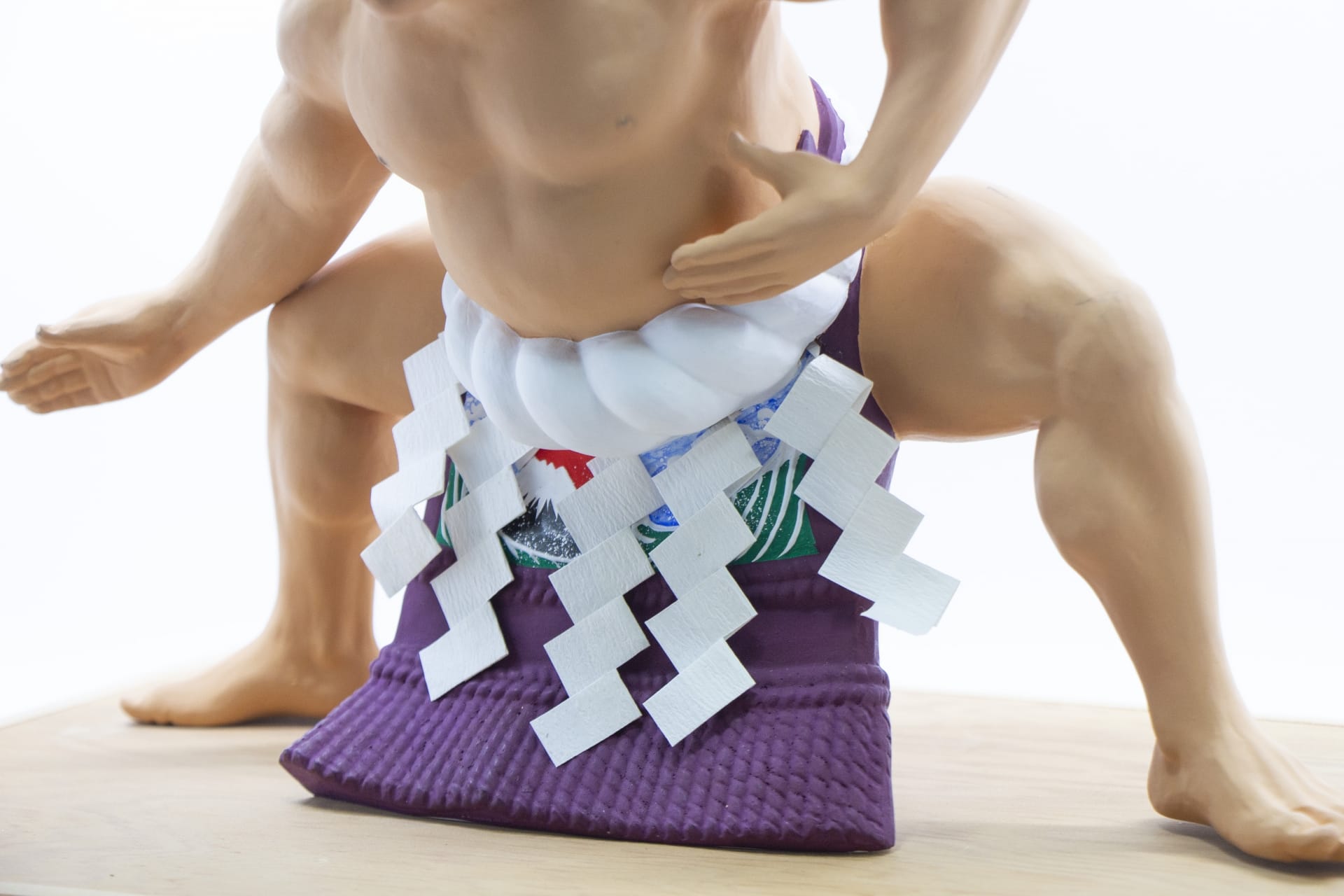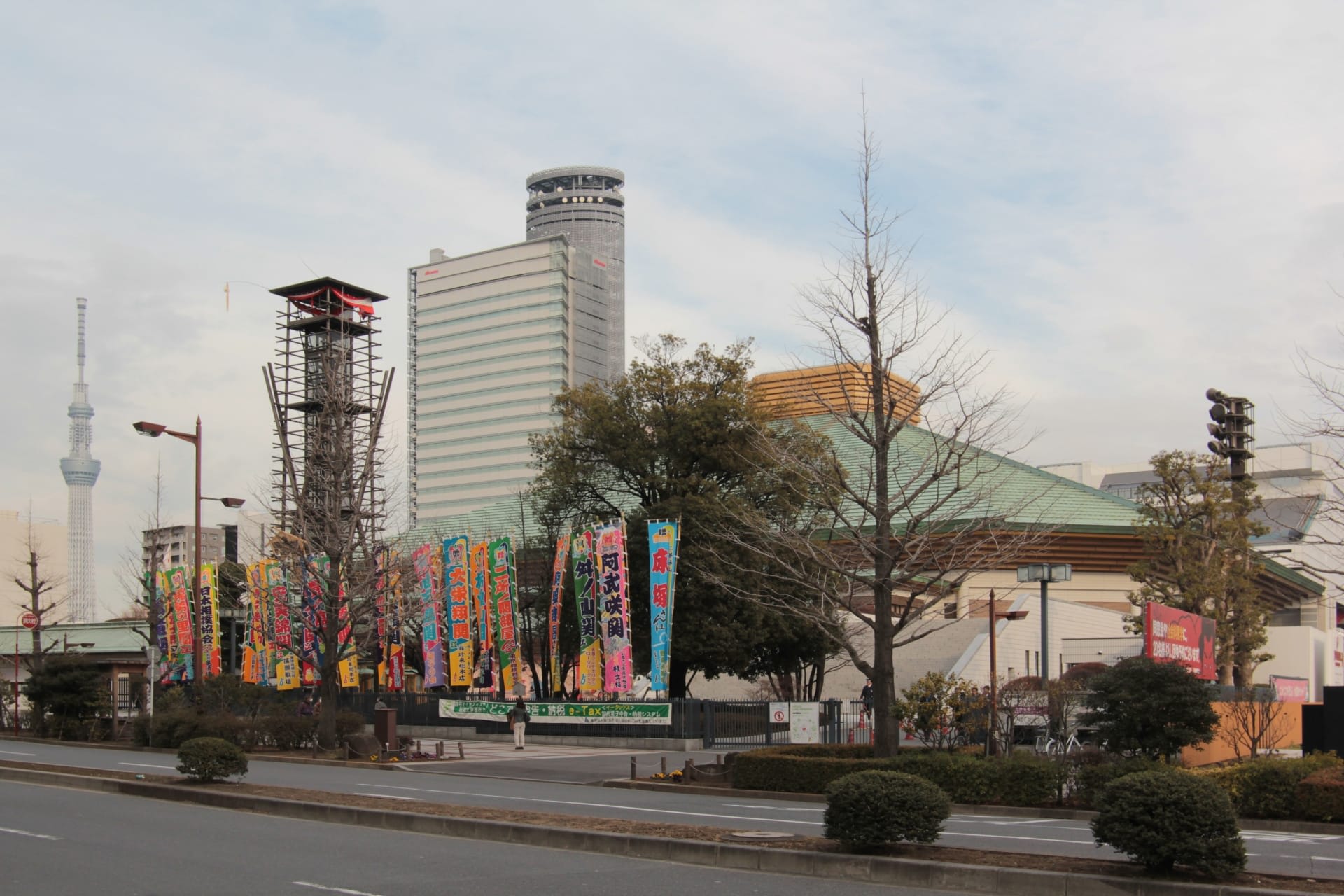Ultimate Guide to Ryogoku & Oshiage: A Foreign Visitor's Guide to Tokyo's Sumo District
From Ryogoku, known as the sacred ground of sumo since the Edo period, to Oshiage where the 634-meter-tall Tokyo Skytree stands, this area is a special place where Japanese tradition and innovation harmonize beautifully.
Indeed, some visitors might feel overwhelmed by the crowds of tourists or the strict rules when visiting sumo stables. However, the chance to witness powerful sumo wrestlers up close during morning practice sessions and the opportunity to delve deep into Tokyo's history from the Edo period to the present day at the Edo-Tokyo Museum are unique experiences you can't get anywhere else.
With excellent access to Asakusa and Akihabara, this area is ideal as a base for exploring Tokyo. Whether you're watching sumo at Ryogoku Kokugikan, enjoying the panoramic views of Tokyo from the Skytree observation deck, or strolling along the Sumida River, this special neighborhood where the spirit of Edo coexists with modern Tokyo is packed with various attractions.
To enjoy this area more deeply, I recommend an English-guided sumo morning practice tour. The "Tokyo Sumo Morning Practice Tour in Ryogoku" with over 4,000 participants offers a 2.5-hour immersion into sumo culture at an affordable price of $97.70.
Additionally, the "Tokyo Skytree Town Watch Sumo Wrestler's Morning Practice in Oshiage" tour offers opportunities for photo sessions with active sumo wrestlers, allowing you to experience the world of sumo more intimately. I encourage you to use these tours to create unforgettable memories.
Table of Contents
・The Appeal of Ryogoku & Oshiage Area
・Must-See Spots in Ryogoku Area
・Tourist Attractions in Oshiage Area
・Recommended Model Course for Ryogoku & Oshiage Area
・Areas to Visit Along with Ryogoku & Oshiage
・How to Access Ryogoku & Oshiage Area
・Frequently Asked Questions
The Appeal of Ryogoku & Oshiage Area
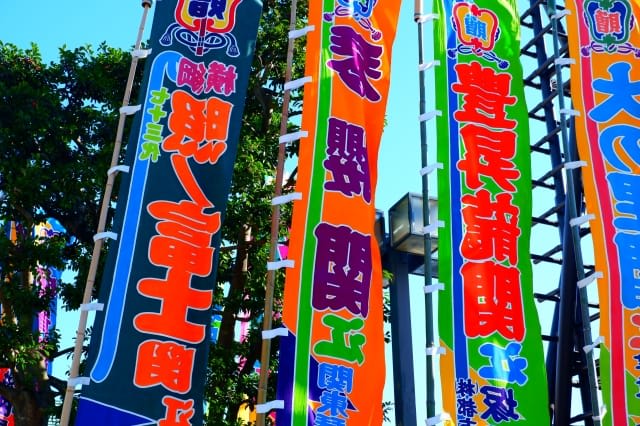
The Ryogoku & Oshiage area is a uniquely attractive tourist destination where Japanese traditional culture and modern urban functions harmonize beautifully.
In Ryogoku, which has flourished as the sacred ground of sumo since the Edo period, you can still visit sumo stables to observe morning practices and see the Ryogoku Kokugikan where official tournaments are held. The opportunity to see sumo wrestlers' training up close is a valuable experience that allows you to feel Japanese traditional culture firsthand.
On the other hand, in the Oshiage area, the 634-meter-tall Tokyo Skytree stands tall, surrounded by the latest commercial facilities and tourist attractions. The scenery created by this contrast between old and new is truly a unique charm of Tokyo.
With excellent access to Asakusa and Akihabara, it's an ideal base for exploring Tokyo. The area is also rich in cultural facilities such as the Sumo Museum and Edo-Tokyo Museum, providing an environment where you can learn deeply about Japanese history and culture.
Must-See Spots in Ryogoku Area
Centered around the Ryogoku Kokugikan, Ryogoku, known as the sacred ground of sumo, is dotted with spots where you can experience traditional culture that has continued since the Edo period. Here, I'll introduce the sights worth visiting.
Ryogoku Kokugikan and Sumo-Related Facilities
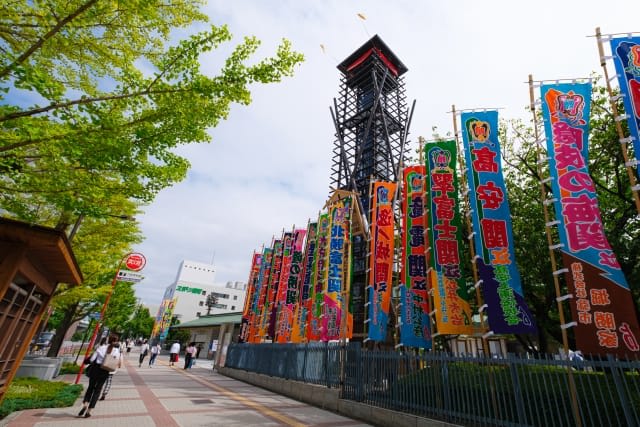
The symbol of Ryogoku, Ryogoku Kokugikan, is the sacred place of the Japan Sumo Association where Grand Sumo Tournaments are held three times a year (January, May, September). Inside the arena, which can accommodate over 10,000 people, spectator seats are arranged around the dohyo (sumo ring), allowing you to watch powerful matches up close. During the tournament periods, you can experience the thrill of sumo, Japan's national sport, in the Kokugikan filled with excitement from morning to evening.
The Sumo Museum is also located within the building, displaying valuable materials that convey the history of sumo, such as the kesho-mawashi (ceremonial aprons) of past yokozuna and victory banners. There are also several sumo stables scattered nearby where you can observe morning practices and see the daily training routines of sumo wrestlers up close. However, visiting sumo stables requires advance reservations and strict adherence to manners.
For sumo souvenirs, I recommend the specialty shops around Ryogoku Kokugikan. They offer a wide range of traditional sumo-related products such as hand towels, yukata, and more.
Ryogoku Kokugikan Website: https://kokugikan.sumo.or.jp/
Around Edo-Tokyo Museum

The Edo-Tokyo Museum is a comprehensive museum where you can learn about Tokyo's history and culture from the Edo period to the present day. You can experience life in the Edo period through impressive exhibits such as life-size reproductions of Nihonbashi and Edo townscapes. The museum also has ample English guidance, allowing foreign visitors to gain a deep understanding of Tokyo's history.
In front of Ryogoku Station, there's a shopping street with an Edo atmosphere where you can catch a glimpse of local people's lives. The "Former Yasuda Garden," built in the Meiji era, is a soothing spot where you can enjoy the beauty of Japanese gardens in all four seasons.
The view of the Sumida River from Ryogoku Bridge is also not to be missed. Especially during cherry blossom season and at dusk, you can capture beautiful scenery in photos. At the Fukagawa Edo Museum, you can learn about the strong will of the Japanese people to recover from disasters, as it tells the history of recovery from the Great Kanto Earthquake.
Edo-Tokyo Museum Website: https://www.edo-tokyo-museum.or.jp/
Recommended Tour in Ryogoku Area: Tokyo Sumo Morning Practice Tour in Ryogoku
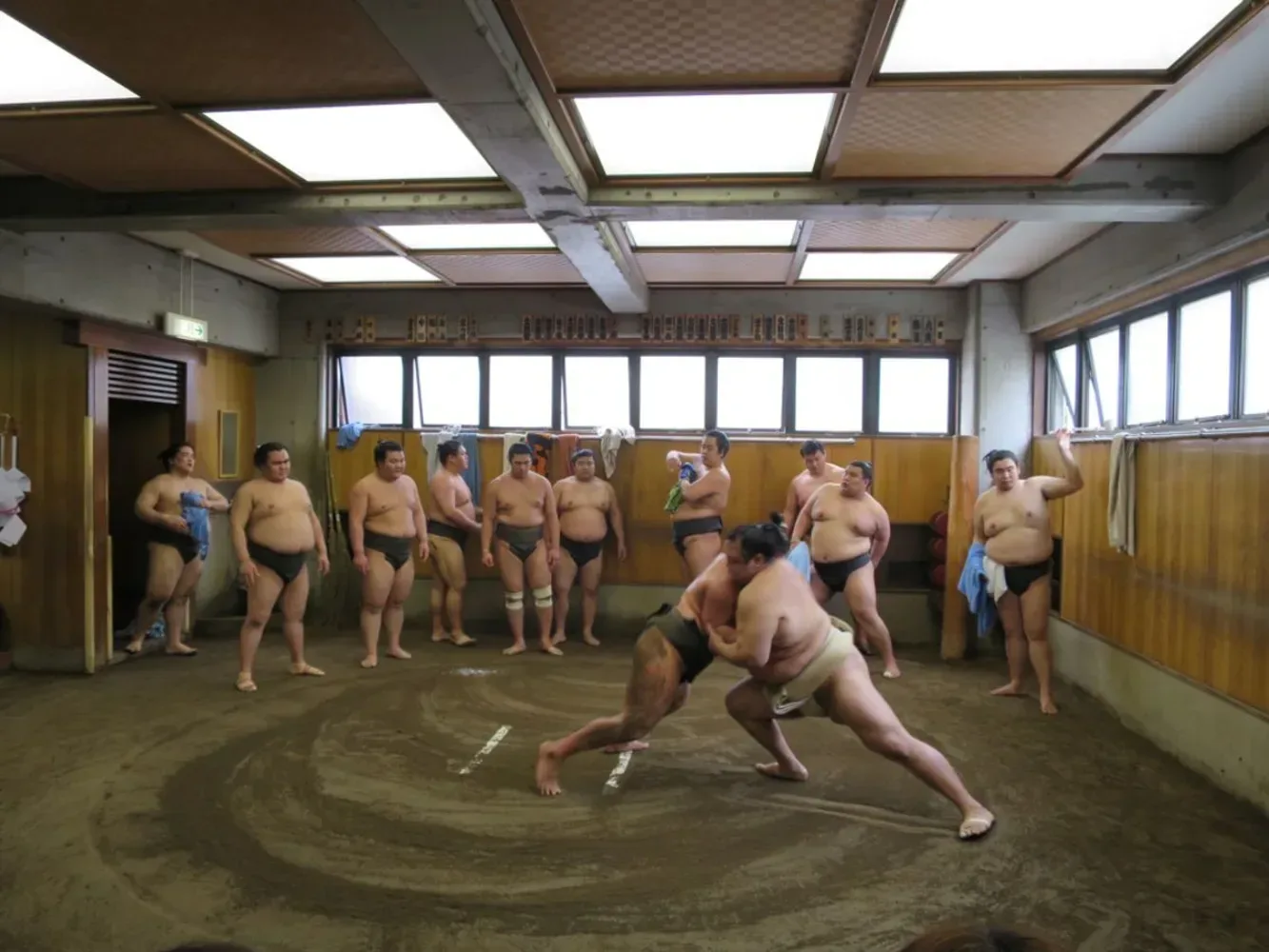
Our 2.5-hour tour offered by MagicalTrip, meeting at Ryogoku Station, is packed with content from observing morning practice to walking around sumo-related spots in the Ryogoku area. With over 4,000 participants, this tour provides a valuable opportunity to learn deeply about Ryogoku's sumo culture at an affordable price of $97.70.
Designed for participants aged 12 and above, seating is primarily on zabuton cushions. There are chances for photo opportunities in the sumo stable and with sumo wrestlers (subject to the stable's discretion), creating lifelong memories.
Participants are provided with a guidebook, and since talking is prohibited during practice, it's designed so you can learn about sumo basics and history in advance. The English-speaking guide will provide detailed explanations, allowing you to gain a deeper understanding of sumo culture.
Note that seating is on a first-come, first-served basis as the tour is shared with other companies, so latecomers might end up in the second or third row from the front. Cancellations are fully refundable up to 72 hours in advance.
For more details: Tokyo Sumo Morning Practice Tour in Ryogoku
Tourist Attractions in Oshiage Area
Centered around Tokyo Skytree, which reigns as Tokyo's new landmark, the Oshiage area perfectly balances modern commercial facilities with the charm of traditional downtown. Here, I'll introduce tourist attractions worth visiting.
Around Tokyo Skytree

Tokyo Skytree is the world's tallest broadcasting tower, standing at 634 meters. From the observation deck, you can enjoy a 360-degree view of Tokyo's cityscape, and on clear days, you can even see Mount Fuji. At night, it's beautifully illuminated, decorating Oshiage's night sky.
At the foot of Skytree, there's a commercial facility called "Tokyo Solamachi" with various stores. You can thoroughly enjoy shopping, from fashion brands that set the latest Japanese trends to specialty shops dealing in traditional crafts.
Also, the Sumida Aquarium offers unique exhibits characteristic of Tokyo's urban-style aquarium. The graceful swimming of penguins in the large tank and the fantastical jellyfish exhibit particularly captivate visitors.
Tokyo Skytree Website: https://www.tokyo-skytree.jp/
Other Highlights
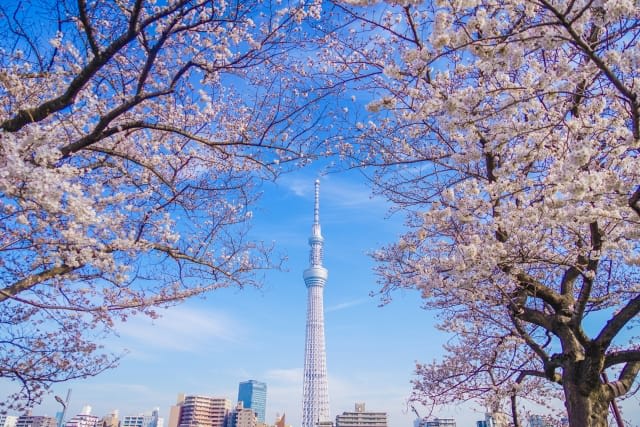
Along the Sumida River, there's a row of cherry trees that bloom beautifully in spring. The riverside walkway is bustling with locals enjoying walks and jogs, giving you a glimpse into the daily life of Tokyo.
If you want to experience the downtown bathhouse culture, I recommend "Daikokuyu." It's a public bath loved by locals where you can experience traditional Japanese bathing culture.
Recommended Tour in Oshiage Area: Tokyo Skytree Town Watch Sumo Wrestler's Morning Practice in Oshiage
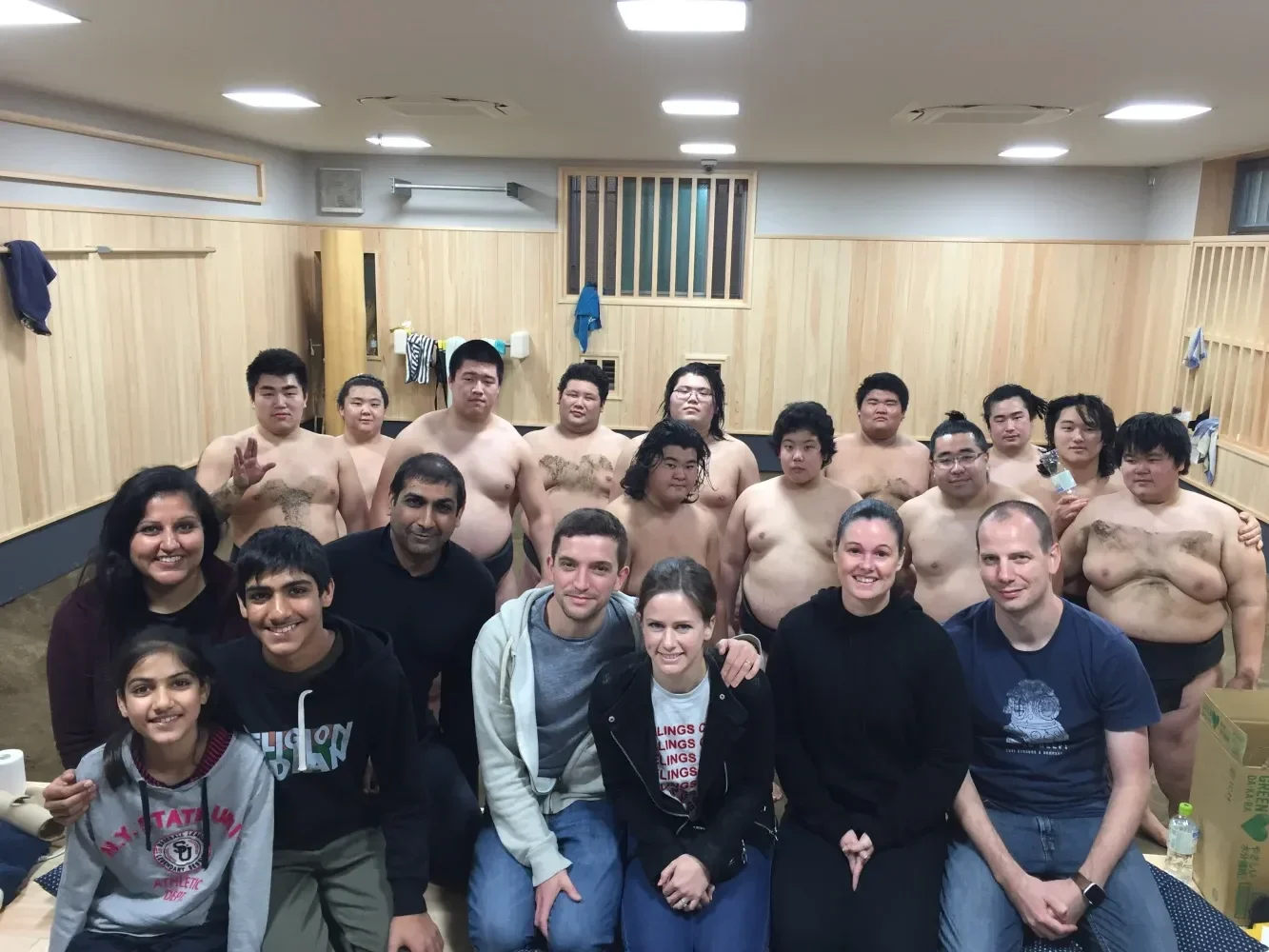
In this tour offered by our MagicalTrip, you can observe the morning practice of active sumo wrestlers up close and feel the world of sumo firsthand. After practice, if conditions allow, you may even have the chance to take photos with the wrestlers, creating a once-in-a-lifetime memory.
An English-speaking local guide accompanies you, providing detailed explanations about the world of sumo. You can learn about sumo rules and the lives of sumo wrestlers in a fun way using quizzes and cards.
The tour lasts about 2 hours, and the fee includes entry to the sumo stable, guide fee, and an original sumo guidebook. However, you need to observe strict manners in the sumo stable, such as no talking during practice and no flash or shutter sounds during photo-taking. Also, please avoid wearing revealing clothing.
Limited to participants aged 12 and above, seating is basically on the floor. There's a possibility of practice time changes or cancellations, but in such cases, a full refund is provided, so you can book with peace of mind.
For more details: Tokyo Skytree Town Watch Sumo Wrestler's Morning Practice in Oshiage
Recommended Model Course for Ryogoku & Oshiage Area
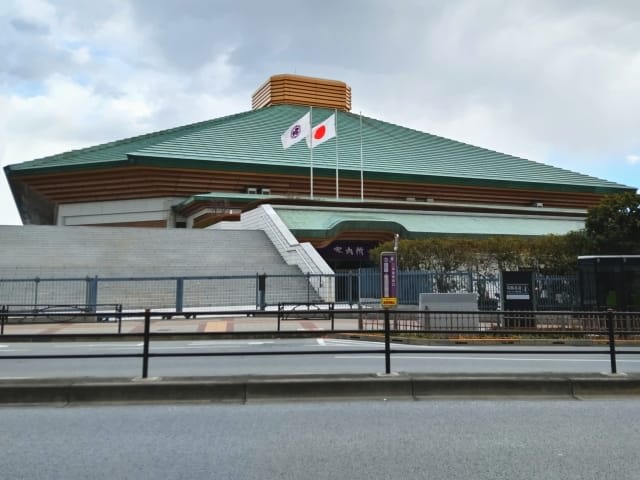
I'll introduce a model course to efficiently tour the Ryogoku & Oshiage area in one day. This plan condenses experiences unique to this area, from sumo culture to the charms of modern Tokyo.
Start early in the morning with a visit to a sumo stable to observe morning practice. You can see the powerful training of sumo wrestlers up close and feel the world of sumo firsthand. After that, learn about Tokyo's history from the Edo period to the present at the Edo-Tokyo Museum. The life-size exhibits and ample English explanations in the museum allow you to gain a deep understanding of Tokyo's history.
For lunch, enjoy chanko nabe, the staple food of sumo wrestlers, at the heart of the sumo stables. This nutritionally balanced, hearty hot pot will soothe your fatigue from sightseeing.
In the afternoon, head to the observation deck of Tokyo Skytree. The view from the observation deck overlooking Tokyo's cityscape is a must-see. In the evening, take a stroll along the Sumida River and admire the beautiful sight of Skytree illuminated as dusk falls. There are many restaurants along the river where you can enjoy a meal while taking in Tokyo's night view.
Areas to Visit Along with Ryogoku & Oshiage
Around the Ryogoku & Oshiage area, there are several attractive tourist spots. You can easily visit them by train or on foot, making your Tokyo sightseeing experience even more fulfilling.
Asakusa Area
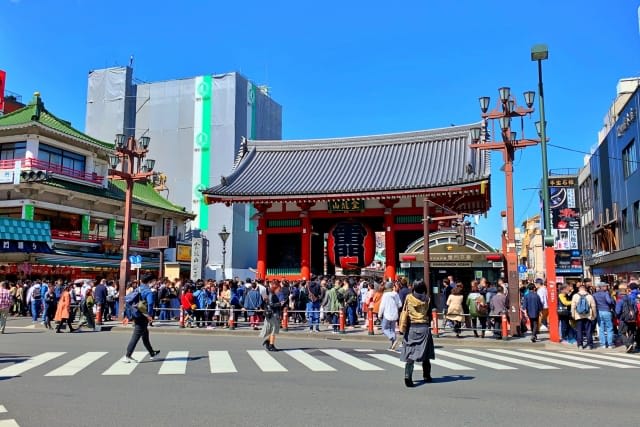
Asakusa, about a 15-minute walk from Oshiage Station, is an area that strongly retains Japan's traditional culture. Sensoji Temple and Kaminarimon Gate are iconic tourist attractions in Tokyo, bustling with many tourists throughout the year. Nakamise Street is lined with long-established shops dating back to the Edo period, making it ideal for finding traditional Japanese souvenirs.
From the Asakusa Culture Tourist Information Center, you can get a panoramic view of Sensoji Temple and the townscape, making it a popular spot for taking photos. Rickshaw tours of the town are also popular, allowing you to enjoy the Edo-style townscape while listening to the guide's explanations.
Around Sensoji Temple, you can find traditional Japanese street food stalls, where you can enjoy food-hopping in a lively atmosphere.
Akihabara Area
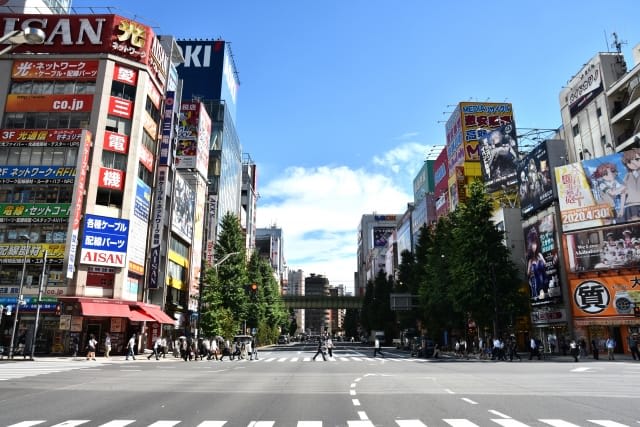
Akihabara, just two stops from Ryogoku Station on the JR Sobu Line, is a world-famous electronics district. Large stores selling the latest home appliances and gadgets line the streets, making it a must-visit spot for technology enthusiasts.
At the same time, Akihabara is known as the center of Japanese anime and manga culture. You can feel Japanese pop culture firsthand with large anime shops, figure specialty stores, and shops dealing in cosplay goods.
There are also many unique theme cafes, including maid cafes, which are popular among tourists seeking unique experiences. Many of these facilities now have English-speaking staff, making it easy for foreign visitors to enjoy.
Nihonbashi Area
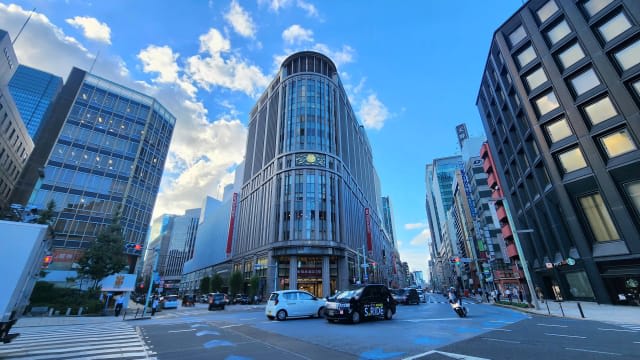
Nihonbashi, about 10 minutes by subway from Ryogoku, is a distinguished area that has flourished as the center of Japanese commerce since the Edo period. The "Nihonbashi" bridge, which was the starting point of the five major roads of the Edo period, still maintains its beautiful appearance and attracts many tourists as a historical structure.
In this area, you can find shopping streets with long-established stores dating back to the Edo period, selling traditional Japanese crafts and ingredients such as washi paper, chopsticks, and tea leaves. There are also many high-end sushi and tempura restaurants where you can enjoy authentic Japanese cuisine.
Ueno Area

Ueno, three stops from Ryogoku Station on the JR Sobu Line, is a popular tourist destination with a concentration of cultural and commercial facilities. Ueno Park houses several museums and art galleries, including the Tokyo National Museum, where you can learn deeply about Japanese art and culture.
At Ameyoko Shopping Street, you can purchase ingredients, clothing, and souvenirs at reasonable prices. The lively atmosphere of the shopping street allows you to fully experience the charm of downtown Tokyo.
Ueno Zoo, opened in 1872, is Japan's oldest zoo and is known for its giant panda exhibit. In spring, Ueno Park becomes one of Tokyo's best cherry blossom viewing spots, with numerous cherry trees in full bloom creating a spectacular sight.
How to Access Ryogoku & Oshiage Area
The Ryogoku & Oshiage area is very conveniently accessible from Tokyo's major stations. JR Ryogoku Station on the Sobu Line is about 10 minutes from Tokyo Station and about 5 minutes from Akihabara Station. You can also use Ryogoku Station on the Toei Oedo Line, making it easy to access from Roppongi and Shinjuku areas.
Oshiage Station, the nearest station to Tokyo Skytree, is served by the Tokyo Metro Hanzomon Line and Toei Asakusa Line, making it convenient to access from Shibuya and Asakusa areas. You can also reach it on foot from Asakusa in about 15 minutes, enjoying the shopping streets along the way.
Frequently Asked Questions
Here, I'll explain in detail the common questions asked when visiting the Ryogoku & Oshiage area.
How can I get sumo viewing tickets?
Sumo viewing tickets can be reserved online on the Japan Sumo Association's official website. However, popular seats often sell out immediately after going on sale, so I recommend early reservations. For reservations from overseas, purchasing through an English-speaking travel agency might be smoother.
There are traditional box seats where you sit in a traditional style and chair seats. You can choose based on your budget and preference. Particularly, the first day and the final day (senshuraku) of the tournament are very popular, and tickets can be difficult to obtain, so planning ahead is necessary.
Is it possible to observe morning practice?
Observing morning practice generally requires a reservation, which can be made through your hotel concierge or a travel agency.
Practice usually starts around 6:00 AM, so you'll need to wake up early. During observation, it's important to follow the unique etiquette of sumo stables, such as refraining from talking and generally not taking photos. Enjoy the experience of being in the special space of a sumo stable while respecting these manners.
Do I need to book Tokyo Skytree tickets in advance?
While it's possible to purchase same-day tickets for Tokyo Skytree, you might have to wait for a long time during busy periods. I recommend booking in advance through the official website, especially around sunset when it tends to get crowded. On clear days, you can see Mount Fuji, so I suggest choosing a day with good weather.
Are there recommended seasons or times to visit?
You can enjoy different charms of the Ryogoku & Oshiage area in each season. It's especially lively in January, May, and September when the Grand Sumo Tournaments are held. In spring, you can enjoy cherry blossoms at Sumida Park, and various festivals are held in summer. In winter, you can enjoy the fantastical illuminations of Skytree.
If you want to avoid crowds, I recommend visiting on weekday mornings. Major tourist facilities are relatively less crowded, allowing you to enjoy sightseeing at a leisurely pace.
The Ryogoku & Oshiage area is a unique tourist destination where Japanese traditional culture and modern urban functions harmonize beautifully. In Ryogoku, known as the sacred ground of sumo, you can experience the world of sumo, Japan's national sport, through watching Grand Sumo Tournaments and observing morning practices. On the other hand, in the Oshiage area centered around Tokyo Skytree, you can fully enjoy modern Tokyo with the latest commercial facilities and observation decks.
With good access to attractive tourist areas such as Asakusa, Akihabara, Nihonbashi, and Ueno, it's ideal as an important base for exploring Tokyo. The number of English-friendly facilities is increasing, allowing foreign visitors to enjoy sightseeing with peace of mind.
I hope you'll use this article as a reference to enjoy the special experiences unique to the Ryogoku & Oshiage area. I'd be delighted if I could help you create memorable Tokyo experiences - immersing yourself in sumo culture, learning about Edo history, and experiencing modern Tokyo!
